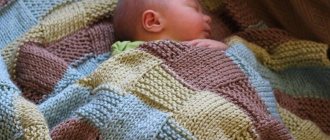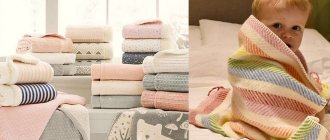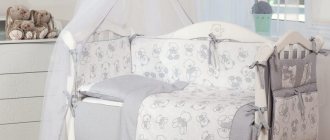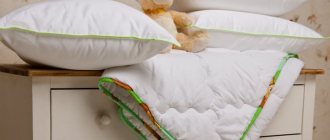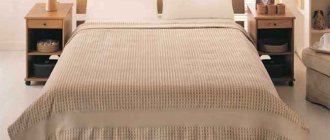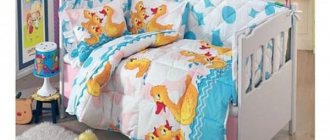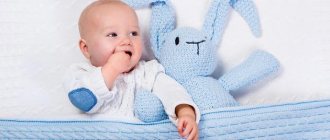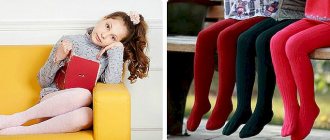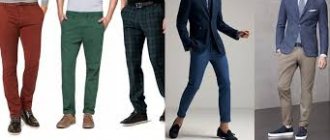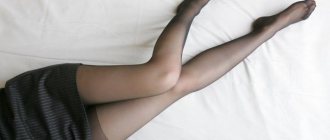A baby blanket provides the baby with a comfortable sleep and a pleasant rest in the crib. How to choose a warm blanket for walks in autumn or cold days in winter, light for spring days, weightless for the summer heat. What is the standard size of a blanket for babies of different ages in a crib or stroller? What to look for when choosing a baby blanket so that the child can easily “breathe” under it and at the same time be warm.
Baby blanket for newborns
Products for newborns are presented in a wide range. When choosing each of them, parents carefully study the quality and reviews. The blanket should be made from natural ingredients. Attention should also be paid to color and size.
Blankets for newborns are the very first blankets for babies.
Otherwise, during operation you will have to face the following problems:
- The size is non-standard, so it is difficult to choose a duvet cover.
- The product is larger than the bed, so it constantly slides off.
- Does not fit in a stroller or playpen.
- The small size, on the contrary, leads to the fact that the child is not comfortable under it.
The material should not interfere with the air movement process
It may contain only natural ingredients. Otherwise, the risk of allergies or irritation increases. The hygroscopicity indicator is not unimportant. The fabric should quickly absorb sweat or moisture.
A blanket for a newborn is a special accessory for a baby’s bedding
Other options
For newborns, sleep is one of the most important conditions for healthy development. During sleep, the baby grows, develops, and gains strength. A comfortable sleeping place should be not only in the crib, but also in the stroller and cradle. It would be better to purchase several options for blankets for different occasions. And also for cold and warm seasons - this makes it easier to control the optimal temperature for a newborn.
In summer, you should give preference to lighter, airier options, which are characterized by greater air exchange, are highly environmentally friendly and have smaller dimensions, for example, 80x100 cm.
For a baby's cradle, a square-shaped blanket is good - for example, 90x90 cm, since it is smaller than a standard crib.
And when discharged from the maternity hospital, first of all they pay attention not to the characteristics, but to the appearance of the envelope. Choose a beautiful, formal design option. So that the discharge blanket could be used in everyday life, the designers combined an elegant envelope and a standard version in the form of a transformable blanket. This is a convenient and economical variety that is also practical for walking. Such transformers come in various models and sizes: from 140x110 to 150x115 cm.
The stroller is also an important sleeping place for the child, so you should take care of a blanket for it too. It is better if it is small, but first of all you should focus on the size of the stroller and the weather. Nowadays the market offers a huge range of bed linen, a wide variety of shapes, sizes and colors. It is advisable to choose a duvet cover before buying a blanket.
Standard sizes
Today, manufacturers offer the following parameters, which are not divisible by 10 cm. Thanks to this, when using the duvet cover, the likelihood of wrinkles forming is minimized. Size – selected depending on the age, height and weight of the child.
Standard indicators:
- 80 by 80 cm.
- 60 by 90 cm.
- 90 by 120 cm.
- 100 by 140 cm.
- 110 by 140 cm.
- 140 by 200 cm.
The most important parameters for a baby blanket are high thermal conductivity and the ability to pass air
Peculiarities
A blanket differs from a baby blanket in structure and purpose of use. It protects babies from cold air, wind and even prying eyes.
The blanket is both warm and very light. When a baby sleeps in a crib, he is usually covered with a blanket to protect him from the cold. A small blanket is more suitable for walking.
Preference is given to a blanket in the following situations:
- when you need to get your baby out of the stroller and it’s cool outside;
- you can cover the legs of a baby sitting on a sled during winter walks;
- for the child’s convenience, a folded blanket can be placed under the body or head;
- the blanket is too bulky for a stroller, but the blanket is just right;
- sometimes there is no suitable place to feed the baby, then the mother can cover herself with it;
- if you have to spend the night away from home, a familiar shelter will help the child relax;
- Sensitive children feel uncomfortable if they are uncovered even in summer. A lightweight textile product will create a feeling of security for them;
- If the blanket is long enough, then it can be used to cover a sofa or the bed of an older child;
- The product is suitable as a play mat for a baby.
[content-egg module=AE__topshopru template=custom/grid3]
Articles on the topic (click to view)
- Fences for parking lots and parking areas
- Selection of reinforced concrete columns
- How to secure a sheet to a mattress: ideas and tips
- 5 ways to make your interior more expensive
- Cleaning upholstered furniture
- What are the sizes of duvet covers?
- Blanket sizes and standards
For a newborn
For this purpose, models with dimensions of 80 by 80 cm, 85 by 85 cm, 90 by 90 cm have been specially created.
Parents should make sure that immediately after birth the child can be in comfortable conditions.
A square shape is considered optimal. Thanks to it, the child can be easily wrapped and reliably protected from the weather. Under this, the baby will not be cold to sleep at home.
A cradle or playpen is a fairly narrow space. That is why it is recommended to make a bedspread with a width of no more than 40 cm.
Of course, there is no single standard size for children of all ages and parameters.
For the summer season
The universal size for summer is considered to be 90 by 120 cm. It can cover a baby up to 3 years old inclusive.
In summer, do not wrap your baby in a warm blanket
To create more comfortable conditions, it can also be folded on both sides.
In summer, parents can also cover the baby with a regular diaper.
However, this option is difficult to use in combination with a stroller.
For discharge from the maternity hospital
Such options are very popular. Newborns are small in size and weight, so they need to choose the right things. Most parents choose a blanket 118 by 118 or 110 by 140 cm. These options are used even in maternity wards.
Baby blanket for discharge from the maternity hospital
For walks during winter
During the cold season, the child should be protected from negative external influences. A blanket 60 by 90 cm is ideal for this. It can also be used if the baby already knows how to roll over. For a child older than one year, it can be used for partial protection. For example, parents can cover their legs in the stroller.
For winter walks, choose a warm and comfortable product
How to choose the right crib
As a rule, a newborn baby’s crib is purchased shortly before he is born. At the same time, many young parents pay attention mainly to its appearance. However, one cannot be guided only by beauty. There are many important points to take into account.
First of all, you need to pay attention to the material from which the crib is made. Natural wood has always been considered the best.
Wood is an environmentally friendly material; it “breathes” itself and allows others to “breathe.” It is easy to wash, making it easy to keep the crib clean.
At first glance, it will not be possible to determine what this or that crib is made of. It is quite possible to mistake impact-resistant polystyrene or plastic for wood.
There is nothing to worry about if some parts turn out to be non-wooden - it is important that there are not too many of them and that they do not interfere with the baby’s body “breathing”. Therefore, having chosen a cradle, you should definitely ask the seller for a hygiene certificate - it should indicate what material the product is made of, as well as how harmless it is.
Some people think that now only abroad they make beds from natural materials. This is not so - the domestic industry produces a lot of wooden cribs.
A comfortable and spacious crib is ideal. In addition, it must have two levels. The height of the crib is not particularly important for a newborn. For now, it is necessary that it is not very deep: then it is much easier to put the baby down without waking her up. When the child grows up and begins to stand up, the depth of the crib is already important so that the little person, while learning about the world, cannot fall out of it.
The distance from the top bar of the railing to the mattress in its lowest position should be at least 66 cm. For some cribs, the top bar on one side is removed, and the crib becomes lower by 10 centimeters.
This is very convenient for a mother who rocks her baby in her arms. It is easier to put the baby down without causing him any inconvenience. But then the bar should be returned to its place so that the child, overcome by curiosity, does not fall.
The crib can also be on wheels, which is very convenient for moving it to other rooms. Some models are made like rocking chairs - the baby will surely like this crib, since he can lie down for a while and enjoy the rocking process, and then fall asleep faster.
There are cots that extend in width and length. It is good if two or more rods near the crib are removed. Then an older child can easily get out of it and get back in without having to climb over the top and without fear of falling. There is also an option when the bed is combined with a changing table.
There are models with lower drawers for bed, clothes or toys. This slightly increases the cost of the crib, but makes it more convenient, as it eliminates the need to buy an extra wardrobe or chest of drawers. Everything you need is at hand.
Some parents like a cradle basket. However, it is only suitable for children up to one year old and is convenient because it has handles for carrying. A large open space can frighten babies and make them wary at first, but they feel comfortable in a crib. Although in three or four months the child will grow out of it, and then he will have to buy a new bed. An excellent replacement for such a crib is a stroller with a removable basket.
Of course, the main component in a baby's crib is the mattress.
In order to choose it correctly, you need to consider:
- The standard size is 120 x 60 cm. There are also beds 110 x 60, 115 x 55, 112 x 55, 140 x 70. Therefore, before you go to buy a mattress, you need to measure the internal dimensions of the crib.
- Environmentally friendly. The mattress must be made of natural material that allows air to pass through, without harmful fumes and maintaining its properties for the entire period of use.
- Orthopedic. Most often, mattresses are called orthopedic, the basis of which is a block with independent springs. They are good for health, but only an adult will feel their wonderful properties. For a children's mattress, independent springs are not essential. The main thing is that the block is double-framed, that is, on both sides there is a frame around the perimeter (there are blocks 5-6 cm high, but they are not used in the manufacture of children's mattresses).
Orthopedic mattresses are also called all those mattresses that allow the springs to gently sag under body pressure exactly where needed. In this case, the spine is not deformed, therefore, even if there is no spring block inside, the mattress can be of high quality.
For a crib, it would be nice to have a mattress with a removable cover that can be easily removed and washed. Often, in order to extend its service life, an oilcloth is placed on top of it and then a diaper. You should not buy used mattresses.
In addition to the crib and mattress, you will need a few more things to create a special children's atmosphere:
- The required bed linen includes duvet covers and sheets. A washed, ironed lightweight duvet cover should be placed on the baby bedspread. You will need two duvet covers, two larger bottom sheets and three or four smaller top sheets - they can be cotton, flannel, or terry. The fabric must be soft and should not be starched.
- Pillow. Doctors do not recommend that children under one year old sleep on a pillow. This is harmful for the baby’s immature spine. Babies need a flat surface, but you can put a folded diaper or napkin under their head, but it must be a very soft cloth.
- One lightweight, quilted, thin wool blanket. In general, if the apartment is warm, you should not use warm blankets; a warm diaper or light blanket is quite enough.
When choosing a baby blanket for a crib, first of all, you need to consider its size. So, a model that is too large will have to be tucked in, as it will bunch up and not provide the necessary heat. A blanket that is too small will not cover the baby completely; his arms and legs will stick out from under it and freeze.
You should measure the frame and buy a blanket that matches the length of the bed, and 15-20 cm more in width.
Teenage
During adolescence and school age, a child can use a model with the following dimensions:
- 100 by 140 cm.
- 110 by 140 cm.
- 140 by 200 cm.
- 160 by 200 cm.
Parents should not forget that children experience sharp growth spurts during this period of development. That is why it is recommended to purchase a slightly larger item. Thanks to this, it will be able to last longer than planned and will be useful in the future.
Blankets 120x160 - a popular option for children of primary school age and teenagers
Choice of bed linen
The choice of bed linen depends on the model of the blanket: if you bought a blanket model, it is enough to buy pillowcases and a sheet for it in the same style or color scheme according to the design of the blanket itself. If the blanket does not include a duvet cover, has a fur, knitted texture or complex multi-layered decor, for the general design idea you can purchase covers for decorative pillows or a couple of throws for the backs of chairs. In this case, it is not necessary to buy bedding to match the blanket-bedspread, because it in itself is a bright accent of the room that does not need repetition and support.
Bed linen is purchased specifically according to the size of the selected blanket, taking into account the measurements of the bed and mattress
In this case, it is not only the matching of size that matters: it is important to take into account additions (for example, pillows). Despite the fact that bed linen often does not depend on the overall design idea, it is selected as a set
Therefore, one duvet cover is not enough: it is preferable to choose a set with pillowcases.
Don’t forget about the bedspread, which gives the sleeping area a neat appearance and protects the bed from mechanical damage, protecting it from dirt and accidental moisture. The color of bed linen can be any and usually depends on the preferences of the buyer. It is advisable to avoid depressive and flashy colors that exclude the creation of a calm atmosphere (red, black, dark gray, steel, cold blue).
Light colors visually make the size of the blanket larger, and a pleasant pattern creates the right mood for relaxation. Delicate shades of pastel colors (pink, sky, lilac, coral, mint, beige, turquoise, gold and other tones) are preferred.
Manufacturing materials
It's hard to imagine raising a child and putting him to bed every day without a blanket. Manufacturers offer a wide range of materials.
Their characteristics will need to be carefully analyzed before making a purchase:
Pooh
Down is a natural and environmentally friendly material.
The downside is that dust mites can accumulate on the surface, which can trigger the development of allergies or skin irritation in a child.
They can only be used from adolescence.
Cotton
Flannelette fabric consists only of cotton. The material quickly removes moisture from the skin and does not interfere with the natural process of air movement. It is ideal for a crib or stroller.
Hypoallergenic cotton blanket
cotton wool
Cotton wool is a natural filler that has virtually no disadvantages. The cotton blanket is suitable for a newborn, but it is difficult to wash. That is why excessive amounts of dust and dirt can accumulate on its surface.
Cotton blanket
Wool
Wool blankets look similar to plaids. They are warm, but at the same time thin. Many moms use them as a travel option. Wool should not be used if the child is prone to allergies.
Sheep wool blanket
Fleece
Fleece is recommended for use only in autumn or summer. The material does not absorb moisture well, so the baby will not be comfortable in it in the summer.
Fleece is a good choice of fabric for a baby blanket as it is soft and warm
Silk
Silk can be used to make an excellent natural filler, which will not be a favorable environment for the development of microorganisms. Parents note a lot of advantages of blankets of this type. Unfortunately, not every family can afford them due to the high cost.
Silk blankets are valued for their good thermoregulation and beneficial effect on the body.
Bamboo
Bamboo fabric not only does not cause allergies, but can also be used as an antiseptic.
Children's classic bamboo blanket
Synthetics
Synthetic fillers keep babies warm and do not cause allergies. Some species do not have sufficient hygroscopicity, so the baby may remain wet.
Sewing a crib set yourself
You can make a bedding set for your crib yourself. Information about baby blankets and sizes can be found on the Internet. First, decide what set you need - mattress, blanket, pillow, bumpers.
Preparatory stage
At the preparatory stage, purchase all the necessary materials based on the size of the future kit. Textiles, internal filling, decorative elements, stock (threads, buttons, zippers, buttons). Check the size of the future product. If necessary, make a pattern. Choose environmentally friendly fabric from natural fibers. The finished product must conduct air well, be warm, hygroscopic, and light.
Uncover
Using a standard pattern or individual measurements, mark the cut details on the fabric with seam allowances of 1.5-2 cm. Cut the bedspread filling in accordance with the dimensions of the main textile. Prepare all parts for stitching. Filling in two layers is not cut, but folded in half to create the thickness of the blanket.
Sewing process
Carefully stitch and connect all the parts. The cover can be sewn in patchwork style or from a single solid or colored piece of fabric. Place filler between the top and bottom layers of the blanket, stitch along the perimeter, and trim the edges with piping or trim cut on the bias. To strengthen the filler, place a straight or figured stitch over the entire surface of the product.
Tips for choosing a baby blanket
When choosing things for a child, attention should be paid not only to size. The material used as the outer shell and filler is key. It is best to avoid synthetics, as they interfere with the natural process of air movement. When condensation accumulates, the risk of developing allergies increases. It is important to consider the size of baby blankets when choosing bedding and pillows for your baby.
Today, children's blankets are made from a wide variety of materials, differing in price and quality.
Additionally, the following selection criteria should be taken into account:
- Wool can only be used in the cold season.
- The duvet is light, so it will not hinder the baby's movements. As a duvet cover with it, you need to use silk, satin, satin or cotton.
- Although cotton wool does not cause allergies, the demand for it is noticeably decreasing every year.
- Synthetic fillers will not harm the child if they were made using a special technique. This is confirmed by the availability of relevant certificates and other official documents.
Parents should pay due attention to choosing a blanket for their baby.
It must be of high quality, because only in this case its composition cannot have a negative effect on the skin and the body as a whole. Low-quality raw materials are dangerous because they cause serious irritation and allergies.
Various factors influence the choice of size
Table of standard sizes of baby blankets
To make a successful purchase, you need to take into account certain criteria. They will help you more accurately determine the model. We have selected the main factors that need to be taken into account.
| Criterion | Options |
| Age | For:
|
| Material | The most common:
|
| Design | Varies depending on color scheme and print. |
Now you can take a closer look at these criteria so that you can easily decide what you need.
Each age has its own standards
The first criterion is age. Accordingly, this factor is an indicator of size. Often, a baby blanket is designated according to age criteria. Therefore, you need to know for what age what parameters are offered, and if your requests do not correspond to the proposed measurements, choose another age category.
Newborns
Baby Owl Square Blanket for Newborn
Blankets for newborns are usually standard sizes. If you purchase an envelope, it will be 80x80cm when unfolded. An envelope is the best option. It already has the optimal length and width, and after discharge you can use it as a bedspread for a crib.
Small blanket for baby's cradle
There are also envelopes 60x60cm and 100x100cm. The choice depends primarily on the baby’s parameters. It is worth noting that a standard 80x80cm envelope cannot be used for a cradle, because its width is 40 cm. If you plan to place your child in a cradle before purchasing a crib, it is better to choose the smallest envelope. But, in general, a newborn can be placed in a crib immediately.
Preschoolers
A synthetic blanket for children with a backing is suitable for a preschooler
If you chose an envelope 60x60cm or 40x40cm, then the preschooler will be uncomfortable under it: such a product is already too small for him. In this case, you need to purchase a new one, size 80x80cm. This is the optimal size for children aged 3 to 6 years. If you see a blanket marked “3-6 years old” in a store, it is intended for preschoolers and has the parameters described above.
Now you can determine that, for obvious reasons, it is better to buy an envelope for discharge with dimensions of 80 cm or more on one side. However, everything is individual, and if you are planning to purchase a cradle, give preference to a different size, otherwise the problems indicated above may arise.
Nursery bedding set with sizes
Junior schoolchildren
Bedspread – blanket for a schoolboy boy’s bed “Cars”
The child grows, and this process occurs especially quickly during primary school. Accordingly, at the age of 6-7 years you will have to change the baby blanket, since the previous one will obviously become too small. Now select a product from 100 cm depending on the height and volume of the child.
On a note!
When choosing, not only height is important, but also volume measurements.
For younger schoolchildren, the item can remain square and have dimensions of 100x100cm. Or you can choose a rectangular one 100x80cm. This option is also considered optimal. The width in this case depends on the size of the child, the size of the bed and the sleeping style. If your child tosses and turns a lot, it is better to choose a square bedspread.
Pupils
A crib with a beautiful bedding and matching blanket for a school girl
At the age of 10 years, the dimensions of bed linen should be changed. The width of the product in this case is 100-110 cm, and the length increases to 140 cm. But it should be noted that this item must be replaced when you notice that the child is uncomfortable under it, and it has become too small for him. Perhaps a 100x100cm format would be suitable for a schoolchild.
On a note!
The frequency of blanket replacement is affected by the child's growth rate, regardless of age.
Standard for schoolchildren 100x140cm. But if he is not comfortable like this, choose an option 100-110 cm in width by 120 cm in length. Such options are also available in textile stores.
Teenagers
Handmade Quilt for Teenage Girl
For a teenager, a 140x100cm blanket is suitable, but if he has already outgrown it, buy a regular one and a half blanket. Its name corresponds to its size, that is, its length is 150cm. The width is 100-110cm, depending on the model.
The second option is more rational. When purchasing a high-quality one-and-a-half blanket for a teenager, you don’t have to worry about its durability, since such a product can also be used in adolescence.
1.5 sleeping set is suitable for older children when the children's option is no longer suitable
Non-standard options
Do-it-yourself blanket and bedding set for a children's bed to the desired size
In addition to the above, there are non-standard models. They are designed for beds that are unusual in size or shape. They also depend on the individual parameters of the child.
A non-standard option is more difficult to find in mass sales. In this case, you will most likely have to sew it to order. However, you can find some models. So, in the market there are products in formats 100x118cm, 100x125cm, 100x135cm. Recently, more and more non-standard shapes have appeared in stores, so the chances of finding a suitable option without turning to a studio for help are increasing.
Selecting the material
In addition to the dimensions, it is worth considering the material of the product. This is a very important factor. It indirectly affects the selection of sizes, because certain fabrics tend to shrink after washing. Moreover, the manufacturing material has a direct impact on the child’s sleep, so it should not be overlooked.
Baykovoe
A delicate and soft flannelette blanket is harmless and environmentally friendly and is suitable for both a newborn and an older child.
Let's start with natural materials. They are hypoallergenic, so they are great for children.
Flannelette blankets are quite common. They are perfect for wrapping up your little one in the stroller during walks in the fall or on cold summer evenings. In this case, the product must be compact. It is worth noting that its thickness of 5mm makes it as convenient as possible for use outside the home.
This material is used when sewing bedding for different age groups. It is quite warm, but not suitable for winter. Excellent air permeability and moisture absorption. With such a blanket, your baby will always be dry while sleeping.
Down
Duvets are one of the most pleasant and cozy among many other varieties.
You need to be careful with this species. It is not recommended for small children. Bird down, which is a filler, easily attracts dust. As a result, dust mites can grow there, causing various allergic reactions. For a stronger body, it does not pose a great danger, however, for newborns and younger schoolchildren, it is better to replace fluff with safer materials.
But this option also has positive sides. The down perfectly allows air to pass through and prevents the child from sweating too much. Its greatest advantage is its ability to retain heat perfectly. This option is perfect for cold winter walks.
Cotton
A cotton blanket is not the most comfortable and cozy type of blanket, as it weighs a lot, absorbs odors and moisture
Another warm option. This is a good alternative to down. Cotton filler has similar parameters, as it has excellent breathability, hygroscopicity and excellent heat retention. But, unlike the previous one, it does not tend to accumulate a lot of dust. As a result, it is not a breeding ground for unfavorable bacteria and dust mites. Thus, natural cotton filler is a hypoallergenic material that is perfect for warm bedding of any children's age category.
Bamboo
An unusual option is a bamboo blanket, good because it is anti-allergenic and antibacterial
This is a high-quality material that is hypoallergenic and even has antiseptic properties. It is preferable for children with weakened immune systems and a tendency to allergies.
A thing made of bamboo has an excellent “breathing effect”, does not accumulate foreign odors, and at the same time has its own unique aroma, which has a calming effect on the baby’s nervous system. This type does not require special care, does not shrink after washing and does not get confused during it.
Woolen
A wool blanket is one of the best and highest quality of its kind, as it perfectly preserves heat and is very comfortable and soft.
Natural items made from wool have been valued for a long time. They perfectly accumulate and retain heat. Camel or sheep wool used as filler has its own energy. Wool blankets are usually made in the form of a blanket, but there are models with a wool lining. For the child, the second option will become more acceptable. Woolen products tend to become electrified and prickly to the touch, so it is better to limit their contact with open skin.
Fleece
A fleece blanket is made from synthetic knitted polyester fabric, very warm and pleasant to the touch.
Fleece has a good fiber structure and is very soft. This is a great option for any age group. However, you need to use a fleece blanket carefully and not allow the child to sweat under it, due to the low hygroscopicity of the base. This material also does not allow air to pass through very well.
This option is suitable for cold winter walks, as it retains heat well, but does not “breathe”.
Let's pay attention to synthetics
Typically, natural materials inspire confidence and are most often used for sewing various children's textiles. However, they also have negative sides: they can cause allergies, accumulate dust and static electricity. Therefore, it is worth paying attention to high-quality synthetic fillers.
Synthetic winterizer is the most famous and most common material, but it does not allow air to pass through well and quickly deteriorates from washing.
The most common are padding polyester and holofiber. They have good breathability and retain heat well. Such materials are hypoallergenic and have long become a complete replacement for natural fillers. There are many other options for synthetic bases for children's textiles.
A children's blanket made from high-quality holofiber will last longer and have better quality characteristics
Selecting a design
Now about one more criterion that indirectly affects the selection of size. First, about the general provisions regarding design.
Children's blankets are full of different prints. There are fairy-tale and cartoon characters, nature, flowers and various other drawings here. A lot depends on age here. Each period has its own print theme. It is worth noting that psychologists do not advise choosing too bright textiles for the nursery, as this has an exciting effect on the child’s psyche. It is also necessary to consider the material used to apply the print.
Baby blankets with your favorite cartoon character prints
Important!
To apply the design, be sure to choose only high-quality paint.
The product can be decorated with your own hands by doing embroidery and adding fringe. Here it is necessary to take into account its parameters so that the design does not interfere with its ability to fully perform its functions.
Baby blanket with name embroidery
Taking into account the considered criteria, you can choose the right baby blanket and not make a mistake with the size.
Double sided baby blanket with hand knitted front
Patterns for children's blankets. Knitting patterns and descriptions
A blanket for a newborn can be knitted using a variety of techniques. You can consider several of the most common patterns for blankets. It will be more convenient if you use the diagram during the work process.
The table shows several options for knitting patterns for a baby blanket:
| Option | Job |
| "Rubber" | Loops are cast on, the number of which should be divided into 5 + 3 symmetry loops and 2 edge loops. The cycle consists of 8 rows, each of which begins and ends with an edge loop. In each odd row, 3 knit stitches, 2 purl stitches, 3 knit stitches are knitted. In the 2nd and 6th it is the other way around, starting with the purls. 4th and 8th - knitted. A product with such a pattern will be elastic and is perfect for a children's blanket, as it does not have a reverse side. |
| Embossed "Wave" | The loops must be a multiple of 11 + 2 edge loops. The rapport consists of 14 rows. You need to start and end the row with an edge loop. Knitting order:
|
| "Scythe" | To start working, you need to cast on enough loops so that their number is divisible by 21. Then, in rows:
The cycle of 6 rows is repeated again until the required length of the product. |
You can choose a pattern for a baby blanket from a knitting magazine or find it on the Internet. If the needlewoman has extensive knitting experience, you can come up with your own pattern or motif.
Do the duvet and bedspread or blanket differ in size for one bed?
Manufacturers offer parents a wide selection of blankets, but they are often limited to standard sizes. It should be remembered that now, in the era of widespread handmade, you can find models of almost any size. Using products of non-standard sizes, you can create optimally comfortable sleeping conditions.
In addition to the blanket, you can purchase a bedspread for the children's room. Not everyone knows the difference between these two things. First of all, a blanket is a sleeping accessory; it comes into contact with human skin and should be made of natural, breathable materials. The bedspread performs a protective and decorative function - it protects the bed linen from dust, serves as an interior item, the bed covered with the bedspread looks neat and elegant.
The dimensions of the blanket and bedspread may vary significantly. The function of the first is to cover a person, in this case a child, so its size is selected based on the needs of the baby. The second should cover the entire bed, including the blanket, and hang almost to the floor, so it is much larger.
A thing that combines the functions of a blanket and bedspread is a blanket, which can be of absolutely any size. This can be a 200/200 cm canvas or a narrow piece 70–80 cm wide. You can cover yourself with a blanket, say, during daytime sleep, or use it to decorate the bed, and you can use the same blanket for this. The blanket does not need a duvet cover; it can be made from any material, preferably natural.
The blanket can serve as a stand-alone blanket or be used in tandem with it. Nowadays it is fashionable to combine various bed design techniques, combining a blanket and a bedspread, playing with textures and shades. With these accessories you can add a unique charm to your children's room.
Do-it-yourself blanket for a child: size, choice of fabric, filler, work procedure
To make a bedding with your own hands, you do not need to have any special sewing skills. First you need to decide on the size of the product, material and filler. You will need some tools: needles and pins, scissors, measuring tape and, preferably, a sewing machine.
The lower part of the blanket, which will be in contact with the child’s body, should be made of natural fabric, preferably cotton, so you should take a closer look at satin, poplin or cotton. If the blanket has two different sides, one of them should still be cotton, in no case synthetic, without ribbons or other decorative elements. The filler can be flannelette, synthetic padding, cotton, etc.
Now you can start making:
- Cut two squares (or rectangles) of the same size from the fabric. Cut the same piece from the filler.
- Sew the blanks together with the filling from the wrong side, departing from the edge about 1 cm. Leave a small hole (no more than 25 cm) on one side. Through this “window,” the blanket must be turned right side out, and the hole must then be sewn up manually with a blind stitch.
- At the end, the finished blanket needs to be stitched lengthwise and crosswise with a large seam on a machine so that the filling does not clump in the blanket and does not move out.
